Foot and Leg Pain Centre
Leading Children's Podiatrists Norwest
Helping little feet thrive with care
Paediatric Podiatrist
Does your little one regularly mention discomfort in their feet or legs?
Dr Angus Chard PhD, the owner and leading Certified Sports Podiatrist at the Foot and Leg Pain Centre near Norwest, has a special interest in children’s podiatry. With a Doctorate in Lower-Limb and Foot Musculoskeletal Medicine, focusing on Paediatric and Sports Injuries, Dr Chard’s extensive knowledge sets him apart in the conservative management of children’s foot and lower limb conditions. Dr Chard personally oversees all treatments provided by the clinic’s podiatrists, who also share a special interest and focus on children’s podiatry. Dr Chard’s qualifications, experience, and dedication to children’s foot health ensure an exceptional level of care in the field.
Paediatric Podiatrist Norwest
A medical setting can feel daunting for children, which is why we aim to create a relaxed and friendly atmosphere. Our ultimate goal is to ensure that each child feels at ease and receives exceptional care during their visit.
With his affectionate personality, Michael Chard, a Licensed Service Dog, brings comfort and emotional support to children. His calm and loving demeanour is perfect for easing anxiety and providing much-needed reassurance.
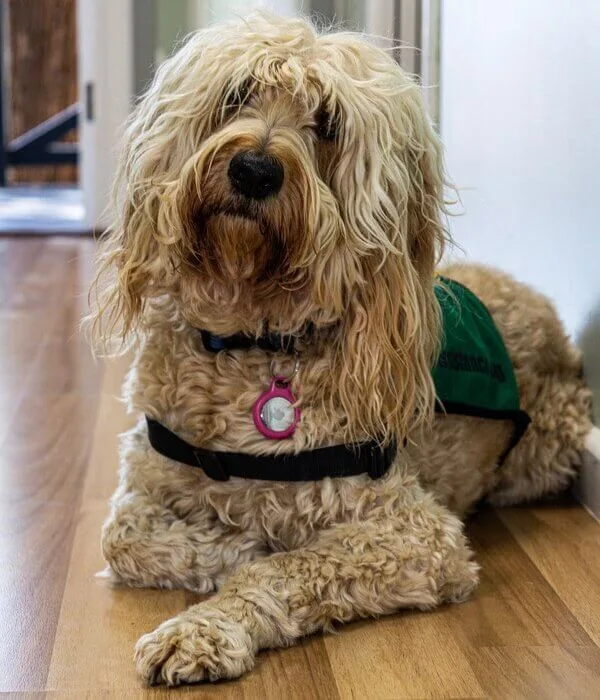
Ways We Can Help
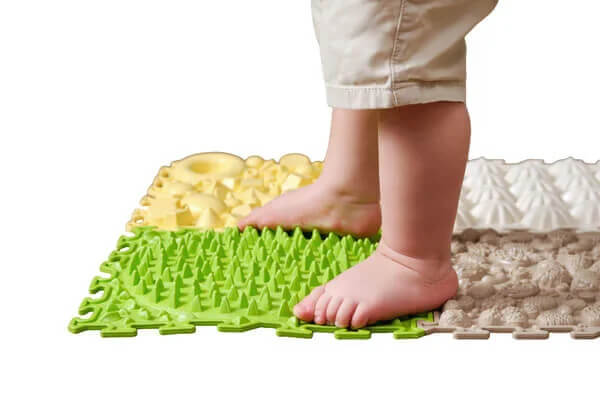
Flat Feet
Flat feet are frequently seen in young children after 18 months and generally resolve on their own. In certain cases, though, they may persist and cause long-term issues. Conducting an early assessment is vital, much like routine eye or dental checks, to detect and manage conditions early. Post-assessment, children can be monitored to ensure they grow out of any potential problems.
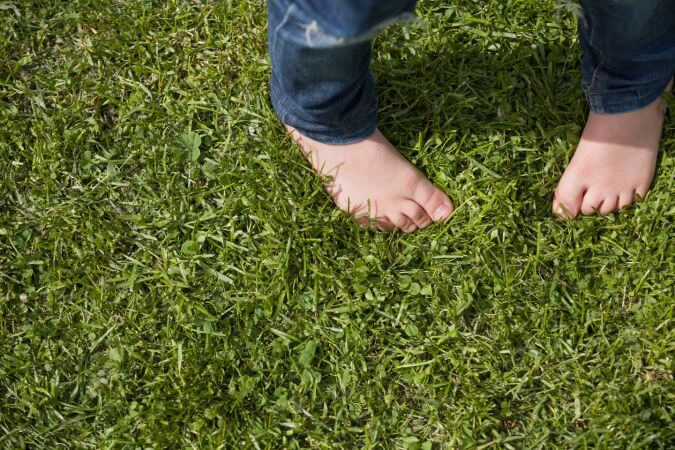
Intoe Walking
Pigeon toes, medically known as intoe walking, are a common developmental phase in young children that generally resolves by age 4. If left unchecked beyond this age, it may lead to instability, pain, or changes in movement. Early care is key to supporting proper growth and preventing long-term issues.
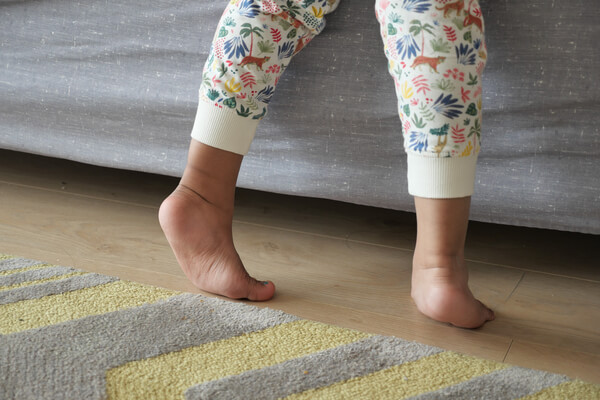
Toe Walking
While toe walking is typical in toddlers, ongoing cases beyond 4 years old may point to issues like muscle tension or neurological concerns. If left unaddressed, it can lead to knee, back, or joint problems. Early intervention is key to promoting healthy growth and preventing long-term challenges.
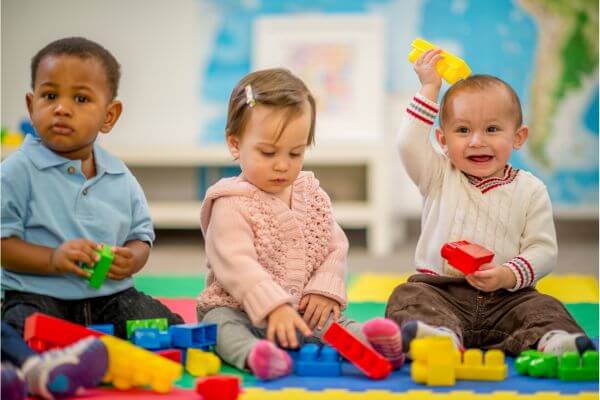
Late or Non Walkers
Delayed walking in children beyond 18 months could be linked to foot or leg concerns. Monitoring their development begins with an initial podiatric assessment and ongoing measurements to ensure healthy progression.
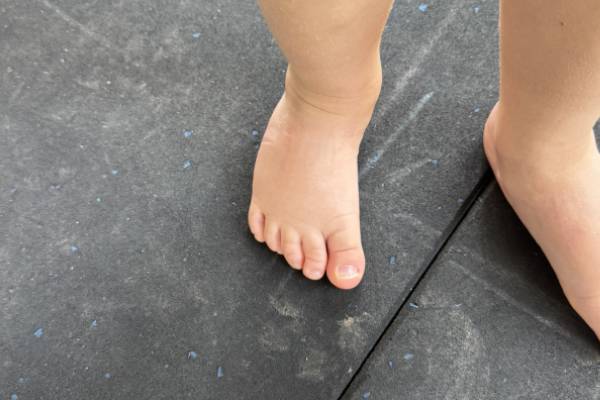
Banana Foot
Known as banana foot, metatarsus adductus results in a curved-in foot shape, usually due to pressure from the foetal position. While it often resolves on its own by age 4, addressing it early, ideally before age 2, is vital. Neglecting the condition can lead to structural abnormalities and chronic aches.
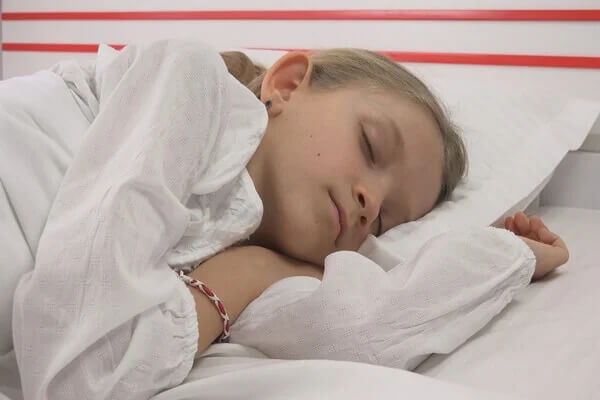
Growing Pains
Although leg aches are common during growth spurts, prolonged pain exceeding two months is considered abnormal. When addressed as muscle overuse syndromes, these pains can often be resolved. The belief that growing pains are a normal part of development is outdated and unsupported by current research.

Severs
Heel pain caused by Sever’s disease often affects children aged 7–12 during growth spurts. Although commonly seen in active children, inactive children are not immune to this condition. Treatment usually involves addressing the structural imbalances behind the pain, offering relief for both active and inactive children.

Vertical Talus
Flat feet, occasionally due to a vertically aligned talus (talipes calcaneovalgus), can affect children’s development. Although it often improves on its own, some cases persist into adolescence or adulthood, leading to reduced foot strength and potential complications. Identifying this condition early can help children meet milestones like climbing stairs and running.
Foot And Leg Pain Centre
Sydney's Trusted Children's Podiatrist
A toddler’s growing legs and feet experience many changes. Routine monitoring and measurements are key to identifying concerns early and providing appropriate care. Early detection is essential for healthy legs in adulthood — take steps to safeguard your child’s future well-being.
1-2 years
We carefully observe your baby’s journey to becoming a toddler, assessing their foot structure and development. By closely monitoring milestones such as crawling and standing, we can address any issues early.
2-3 years
During this time, we assess your toddler’s early walking, posture, and balance, identifying issues such as excessively flat feet. With expert advice, we help foster healthy movement as your child explores and grows.
4-6 years
As activity levels increase, we monitor for common foot concerns, such as flat feet, in-toeing, or toe walking, and address any clumsiness. This ensures your child’s feet develop correctly, allowing them to stay active with confidence.
Paediatric Assessment
Support your child’s growing feet – book their podiatry appointment now.
Foot And Leg Pain Centre
Encouraging healthy growth for your child
Leg aches, foot posture challenges, and structural concerns can occur as children grow. Early detection ensures healthy skeletal development and helps them stay on par with their peers.
Supporting healthy growth through early care is our priority at the Foot and Leg Pain Centre.
Your First Visit
At the first appointment, we’ll carry out a thorough and enjoyable assessment of your child’s foot health, creating a stress-free and caring environment for both you and your child.
Treatment
We develop customised treatment plans designed to meet your child’s specific needs, focusing on strategies that encourage healthy foot growth and alleviate any discomfort.
Working Towards Your Outcomes
We aim to support your child in achieving optimal outcomes, helping them walk, run, and play with healthier feet and greater confidence while staying active and joyful.
Why Choose Us
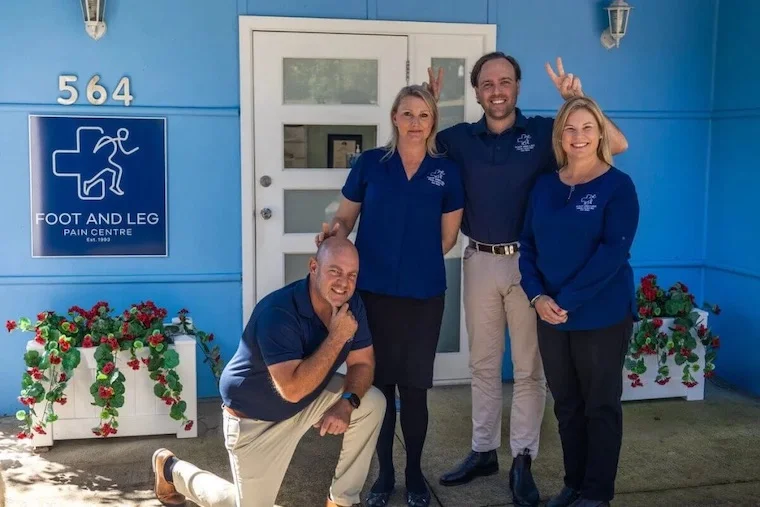
A Team You Can Rely On
As a second-generation Certified Sports Podiatrist, Dr Angus Chard, PhD, is internationally recognised for his expertise and extensive clinical experience, heading a team of skilled professionals.

Focused on Assistance
The team at Foot and Leg Pain Centre is committed to supporting people, including children of all ages, in achieving their goals and alleviating their pain.
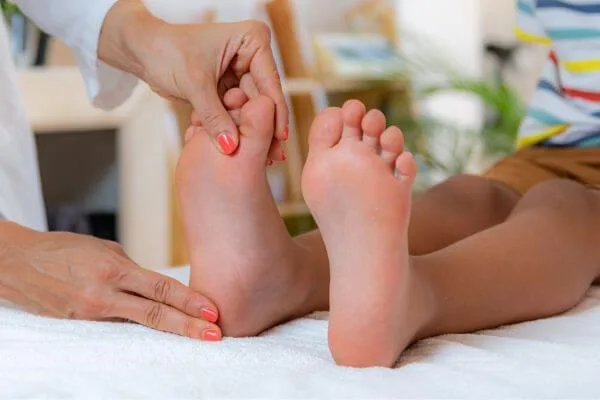
Evidence-Based Care
Our warm demeanour and ability to put children at ease are paired with treatments grounded in both scientific research and practical experience. We provide clear facts and options, fostering a patient-centred, relaxed environment.
Helping Little Feet And Legs
At Foot and Leg Pain Centre, we provide a variety of treatment options. The best approach for your child will depend on factors like the location, type, and cause of their pain.
Some children might benefit from 3D printed custom orthotics, while others may require follow-ups, footwear guidance, foot strengthening exercises, posture and biomechanical assessments, manual rehabilitation, or adjustments to their walking and running techniques.
Meet Our Founder
Dr. Angus Chard PhD
Dr Angus Chard PhD, our Founder and Director, is a Certified Sports Podiatrist with 32+ years of experience, committed to guiding young patients towards treatments that combine proven evidence and practical effectiveness.
Support your child’s foot health for a happier future – book an appointment with Dr Angus Chard PhD or one of our trusted podiatrists near Norwest today.
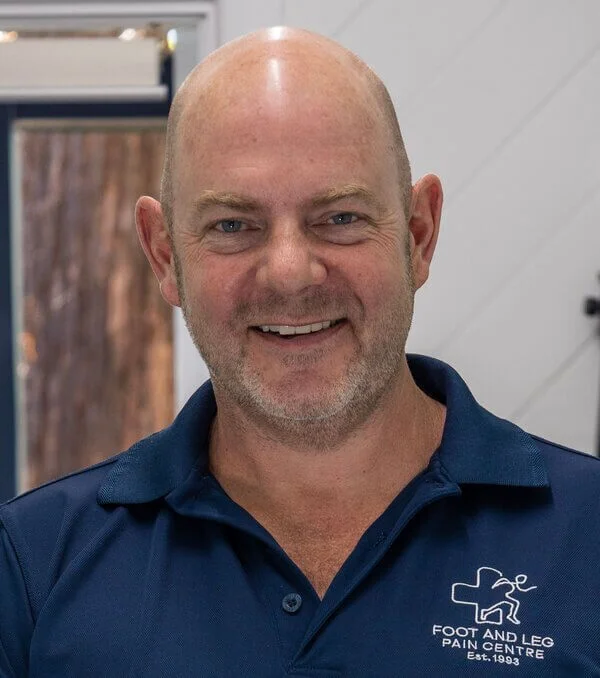
Meet The Team

Michelle Cuthbert
As a podiatrist with more than 20 years of experience, Michelle Cuthbert has a keen interest in children’s foot health. Her background as a runner and mother of two inspires her dedication to early intervention and providing customised care to support young patients.
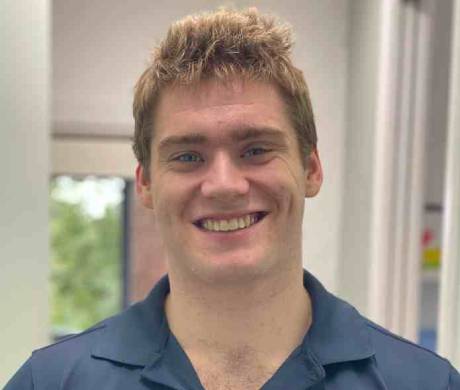
Thomas Shannon
Thomas Shannon, a talented podiatrist and elite athlete, has a strong interest in paediatric lower limb care. Leveraging his expertise in strength, conditioning, and athletics, he provides tailored care for young patients. Thomas proudly represented Australia in hammer throw and Olympic weightlifting.
Foot And Leg Pain Centre
Book Now
Paediatric Assessment
Tiny feet deserve big care – schedule your little one’s podiatry appointment today.
Foot And Leg Pain Centre
Frequently Asked Questions
While this is true for some children, early assessment is essential to confirm their development stays on track. Overlooking concerns can lead to avoidable pain and missed treatment opportunities. Podiatry care helps address these issues so your child can grow without discomfort.
While occasional activity-related discomfort in children is expected, ongoing aches in the legs and feet are not typical. Persistent growing pains are treatable once the underlying muscle overuse is identified and managed.
Flat feet in children have been linked to quick fatigue during activities and more pathological movements in the knees and ankles. While foot arches mature by age eight, 39% of adolescents with flat feet are at risk of knee pain, and 35% may develop hip or back issues. Walking patterns mature by age four, and failing to address abnormal foot positions can result in persistent issues like toe-walking or pigeon-toed walking into adulthood.
Starting assessments early is always best. During the initial visit, your child’s feet and legs will be carefully measured and evaluated with a biomechanical assessment and gait analysis. Accurate measurements allow us to monitor their growth over time. Foot and leg issues can occur at any age, so early attention from a knowledgeable professional is vital.
You don’t need a referral to arrange a podiatry appointment. Book online or get in touch with us directly, and we’ll ensure everything is covered during your initial assessment.
We recommend parents have their child’s feet checked at least once, just like regular eye or dental check-ups. If your child has foot or leg pain, we’re here to help. Unsure? An initial assessment will pinpoint the issue and guide the next steps. For emergencies, always dial 000.
Properly fitted children’s shoes should always offer comfort, with adequate length, width, and room for toes. Evidence highlights that barefoot walking fosters healthier and stronger feet. The natural contact with the ground activates muscles essential for development, but even the most minimalist shoes can interrupt this process.
Selecting the right shoes for your child depends on the intended purpose. Barefoot-like, flexible footwear may suit some situations, while more supportive styles with different levels of support may be required in others. Look for shoes with flat, flexible soles that bend near the toes and a front wider than the heel. Secure fasteners such as laces or straps help keep feet comfortable and prevent slipping.
With Dr Angus Chard PhD at the helm, the Foot and Leg Pain Centre team combines expertise, qualifications, and partnerships with shoe retailers and manufacturers to assist you in navigating footwear options. For advice tailored to your child’s foot care, consult with our podiatrists today.
Certainly, we do. That said, we also prioritise blending evidence with real-world experience, as evidence alone doesn’t always tell the full story. Below, you’ll find references supporting the information presented here.
- Alfaro-Santafé, J., et al. (2021). “Effectiveness of Custom-Made Foot Orthoses vs. Heel-Lifts in Children with Calcaneal Apophysitis (Sever’s Disease): A CONSORT-Compliant Randomized Trial.” Children 8(11): 963.
- Bleck, E. E. (1983). “Metatarsus adductus: Classification and relationship to outcomes of treatment.” Journal of Pediatric Orthopaedics 3(1): 2-9.
- Chard, A., et al. (2011). Effect Thong Style Flip-Flop Footwear On Children’s Hallux Sagittal Plane Motion During Gait. International Society of Biomechanics, Brussels, Belgium, publisher.
- Chard, A., et al. (2012). “Effect of thong style flip-flops on children’s midfoot motion during gait.” Journal of Foot and Ankle Research 5(Suppl 1): O19.
- Smith, R., et al. (2012). “Biomechanics of footwear design.” Journal of Foot and Ankle Research 5(Suppl 1): I1.
- Chard, A., et al. (2013). “Effect of thong style flip-flops on children’s barefoot walking and jogging kinematics.” Journal of Foot and Ankle Research 6(1): 8.
- Chard, A., et al. (2015). Effect of thong style flip flops on children’s sidestep kinematics International Society of Biomechanics in Sport, Poitiers, France, Sports Biomechanics.
- Chard, B.A., The effect of unsupportive and supportive footwear on children’s multi-segment foot dynamics during gait. 2017. USYD Thesis – DOWNLAOD HERE http://hdl.handle.net/2123/18659
- Gijon-Nogueron, G., et al. (2016). “Establishing normative foot posture index values for the paediatric population: A cross-sectional study.” Journal of Foot and Ankle Research 9(1): 1.
- Kothari, A., et al., Are flexible flat feet associated with proximal joint problems in children? Gait and Posture, 2016. 45: p. 204-210.
- Lin, C.-J., et al., Correlating factors and clinical significance of flexible flatfoot in preschool children. Journal of pediatric orthopaedics, 2001. 21(3): p. 378-382.
- Mauch, M., et al. (2008). “Foot morphology of normal, underweight and overweight children.” International Journal of Obesity 32(7): 1068-1075.
- McKay, M. J., et al. (2015). “1000 Norms Project: protocol of a cross-sectional study cataloging human variation.” Physiotherapy.
- Mickle, K. J., et al. (2006). “The feet of overweight and obese young children: Are they flat or fat?” Obesity 14(11): 1949-1953.
- Mudge, A. J., et al. (2014). “Normative reference values for lower limb joint range, bone torsion, and alignment in children aged 4-16 years.” Journal of Pediatric Orthopaedics Part B 23(1): 15-25.
- Redmond A, Crane Y, Menz H. Normative values for the Foot Posture Index. Journal of Foot and Ankle Research. 2008;1(1):6.
- Sanders, R., Orr, R., Chiu, C., Chard, A., Tompsett, C., Fleeton, J., Davies, T., Fong Yan, A. (2018). Development of talent of adolescents in Australian sports high schools. In Pedro Morouço, Portugal: ESECS/Instituto Politcnico de Leiria.
- Staheli, L., et al. (1985). “Lower-extremity rotational problems in children. Normal values to guide management.” J Bone Joint Surg Am 67(1): 39-47.
- Sutherland, D. H. (2001). “The evolution of clinical gait analysis part l: kinesiological EMG.” Gait & Posture 14(1): 61-70.
- Sutherland, D. H. (2002). “The evolution of clinical gait analysis: Part II Kinematics.” Gait & Posture 16(2): 159-179.
- Sutherland, D. H. (2005). “The evolution of clinical gait analysis part III – kinetics and energy assessment.” Gait & Posture 21(4): 447-461.
- Wegener C, et al. (2011). “Effect of children’s shoes on gait: a systematic review and meta-analysis.” Journal of Foot and Ankle Research 4(3).
- Wegener, C., et al. (2013). “Effect of sports shoes on children’s vertical jump performance and midfoot and ankle kinetics.” Footwear Science 5(SUPPL. 1): S58-S59.
- Wegener, C., et al. (2013). “Effect of sports shoes on midfoot power generation in children while walking and running.” Footwear Science 5(sup1): S55-S56.
- Wegener, C., et al. (2015). “In-shoe multi-segment foot kinematics of children during the propulsive phase of walking and running.” Human Movement Science 39: 200-211.
We are a certified NDIS provider, offering services to all NDIS patients, including self-managed, agency-managed, and NDIS-managed individuals. We take a personalised approach to care and are sensitive to the extra time or accommodations some appointments may need, such as touch sensitivity or wheelchair support. Our team is ready to assist.
We are trusted by thousands of happy patients and our results speak for themselves






Families in Dural, NSW, and nearby suburbs trust the Foot and Leg Pain Centre for paediatric podiatry. We serve patients from Westmead, Richmond, Arcadia, Bella Vista, Castle Hill, Cherrybrook, Galston, Glenhaven, Hornsby, Kellyville, Northmead, Norwest, Rouse Hill, Westleigh, Kenthurst, Parramatta, Seven Hills and more areas for paediatric podiatry. Secure your child’s appointment today!


